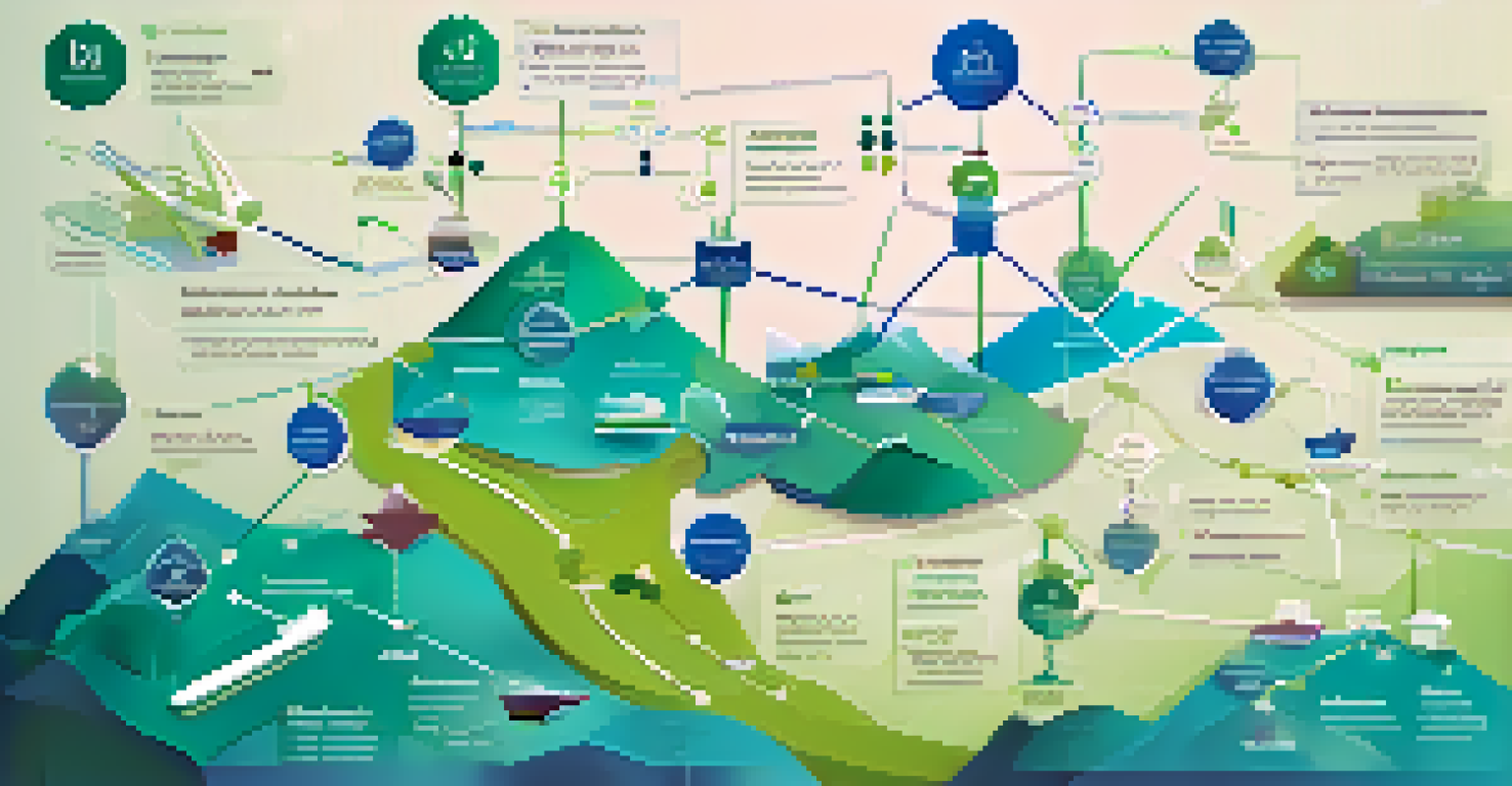Building Resilience in Supply Chains Through Diversification

Understanding the Importance of Supply Chain Resilience
Supply chain resilience is crucial for businesses to adapt in a rapidly changing environment. It refers to the ability of a supply chain to anticipate, prepare for, and respond to unforeseen disruptions. In today's global marketplace, where events like pandemics and natural disasters can strike unexpectedly, resilience is no longer optional; it’s essential for survival.
In today's complex and unpredictable world, resilience is no longer optional; it’s essential for survival.
Consider a company that relies heavily on a single supplier for its raw materials. If that supplier faces a disruption, the entire production process can come to a halt. Building resilience means creating a supply chain that can withstand shocks and continue to operate, ensuring that businesses can meet customer demands even in challenging times.
Diversification is a key strategy in achieving this resilience. By spreading risk across multiple suppliers, regions, and transportation methods, businesses can protect themselves from the impact of disruptions. A well-diversified supply chain not only enhances stability but also fosters innovation and competitiveness.
The Role of Diversification in Supply Chain Resilience
Diversification in supply chains involves sourcing materials and services from a variety of suppliers instead of relying on one or two. This strategy minimizes the risk of supply shortages, as companies have alternative sources to turn to when needed. It's akin to having multiple streams of income; if one source fails, others can keep you afloat.

For example, during the COVID-19 pandemic, many companies faced severe disruptions due to factory closures. Those that had diversified their supplier base were able to pivot more easily, finding alternative suppliers to keep their operations running. This adaptability not only mitigated losses but also allowed them to seize new opportunities in the market.
Supply Chain Resilience is Essential
Businesses must develop resilient supply chains to adapt to unforeseen disruptions in today's global marketplace.
Moreover, diversification can enhance negotiation power. With multiple suppliers, businesses can compare prices and quality, ensuring they get the best deals. This competitive edge can lead to cost savings that can be reinvested into other critical areas of the business.
Identifying Key Areas for Diversification
To effectively diversify, companies must first identify key areas within their supply chain that are vulnerable. This involves analyzing the entire supply chain—from raw materials to final delivery—to pinpoint where risks are concentrated. A thorough risk assessment helps businesses understand which suppliers or regions pose the greatest threat.
The only way to make your supply chain more resilient is to diversify your supplier base.
For instance, a company dependent on a single geographic region for its raw materials may want to explore options in different locations. This could involve sourcing from multiple countries or even considering local suppliers to reduce transportation risks. The goal is to create a more resilient supply chain that can thrive under different circumstances.
Additionally, examining the types of products and services sourced is crucial. By diversifying product lines or services, organizations can mitigate risks associated with market fluctuations. This way, if demand for one product drops, other products can help maintain revenue streams.
Leveraging Technology for Supply Chain Diversification
Technology plays a pivotal role in enhancing supply chain resilience through diversification. Advanced software solutions can provide real-time data on supplier performance, market trends, and potential risks. This insight allows businesses to make informed decisions about where and when to diversify their sources.
For example, predictive analytics can help companies anticipate disruptions before they happen, allowing them to adjust their supply chains proactively. By utilizing such tools, businesses can identify alternative suppliers swiftly and maintain continuity in operations. It’s like having a weather app that not only predicts storms but also suggests the best routes to avoid them.
Diversification Minimizes Supply Risks
Sourcing materials from multiple suppliers helps companies mitigate risks and maintain operations during disruptions.
Moreover, digital platforms enable companies to connect with a broader network of suppliers. This increased visibility leads to more options and better negotiation opportunities, ultimately strengthening the supply chain. Embracing technology is essential for businesses looking to build resilient and diversified supply chains.
Building Strong Relationships with Multiple Suppliers
Successful diversification is not just about finding multiple suppliers; it’s about building strong, collaborative relationships with them. Trust and communication are essential in ensuring that all parties are aligned and prepared to handle potential disruptions. When suppliers feel valued, they are more likely to prioritize your needs during challenging times.
Regular communication helps foster these relationships. Companies should engage with their suppliers through feedback sessions, performance reviews, and joint planning initiatives. This collaborative approach not only strengthens ties but also encourages suppliers to invest in their capability to meet your needs.
Moreover, long-term relationships can lead to better pricing deals and exclusive access to innovations. By partnering with suppliers, companies can work together to develop solutions that enhance resilience, ensuring that both parties thrive in the face of challenges.
Continuous Monitoring and Adaptation in Supply Chain Strategy
Building resilience through diversification is not a one-time effort; it requires continuous monitoring and adaptation. Businesses must regularly assess their supply chain performance and the external environment to identify new risks and opportunities. This ongoing process ensures that the supply chain remains robust and responsive to changes.
For instance, companies should conduct regular audits of their suppliers to evaluate their reliability and performance. This vigilance allows businesses to identify any potential weaknesses in their supply chain and take corrective action before issues escalate. It’s similar to maintaining a car; regular check-ups can prevent breakdowns and costly repairs.
Technology Enhances Supply Chain Adaptation
Leveraging technology enables businesses to monitor supplier performance and anticipate disruptions, improving overall resilience.
Additionally, staying informed about global trends and market dynamics is crucial. Economic shifts, geopolitical tensions, and technological advancements can all impact supply chain strategies. By being proactive and adaptable, companies can refine their diversification strategies to better align with current realities.
The Future of Supply Chain Resilience and Diversification
As we look to the future, the importance of resilience and diversification in supply chains will continue to grow. With increasing globalization and the potential for more frequent disruptions, businesses must prioritize these strategies to remain competitive. Organizations that invest in resilience today are better positioned to navigate the uncertainties of tomorrow.
Emerging technologies, such as artificial intelligence and blockchain, will further enhance supply chain resilience by providing deeper insights and improving transparency. These advancements will enable companies to make informed decisions swiftly, ensuring that their diversified supply chains remain agile and responsive.

Ultimately, building resilience through diversification is not just about mitigating risks; it’s about seizing opportunities for growth and innovation. Companies that embrace this mindset will not only survive challenges but thrive, setting themselves apart in an ever-evolving marketplace.